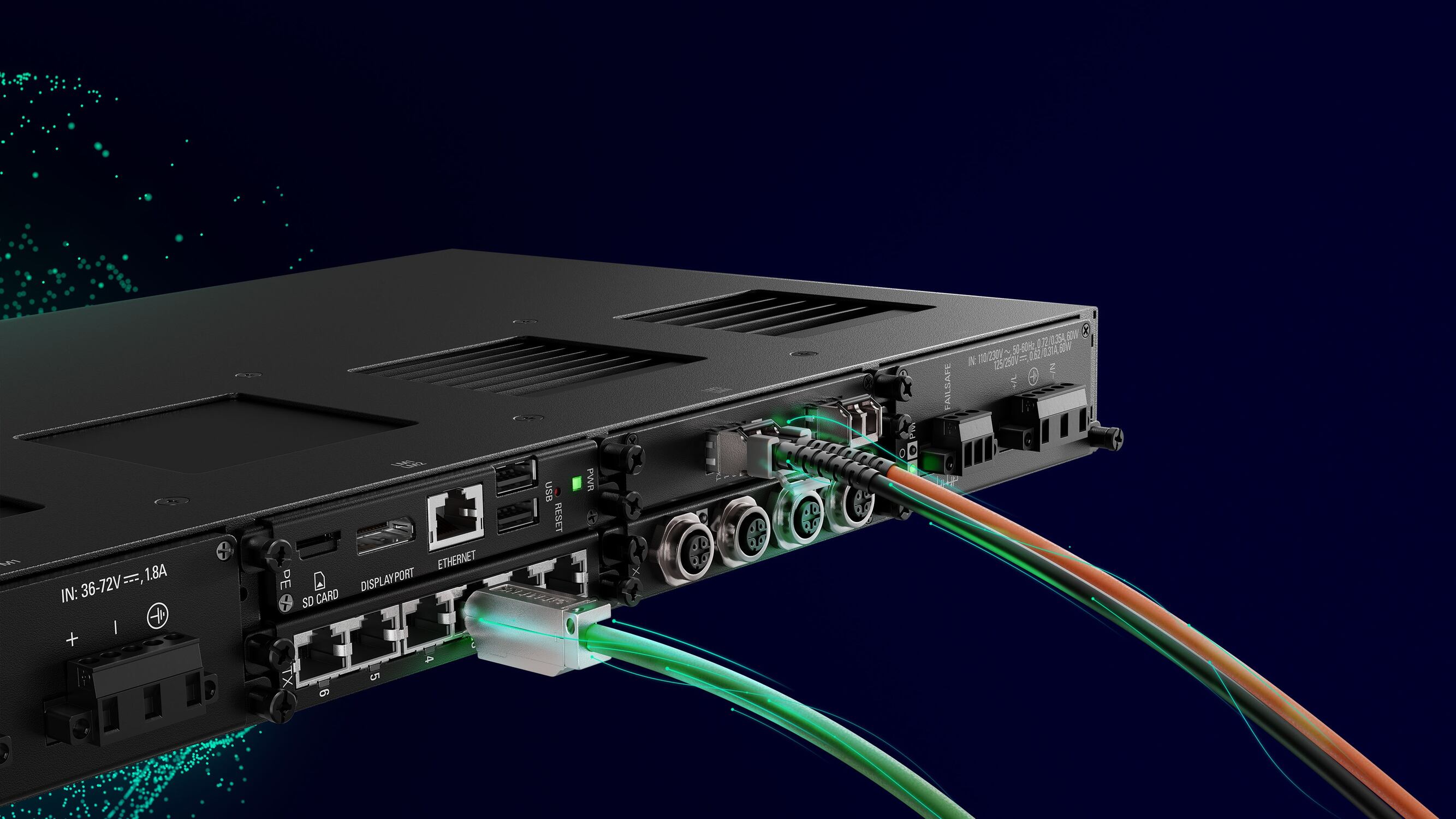Introduction
Network communication encryption plays a pivotal role in safeguarding data integrity and confidentiality, particularly within the realm of embedded security. As the digital landscape continues to evolve, the need for robust encryption mechanisms within network switches has become increasingly apparent. This article delves into the intricate workings of network switch encryption, shedding light on its significance in fortifying embedded security.
In the modern era, where interconnected devices form the backbone of countless systems, the vulnerability of unencrypted network communications cannot be overstated. From critical infrastructure to personal devices, the potential repercussions of compromised data transmission loom large. This underscores the urgency of implementing stringent encryption protocols within network switches to fortify embedded security.
The following sections will explore the fundamental concepts underpinning network switches, elucidate the imperative nature of network communication encryption in the context of embedded security, and delineate the mechanisms through which network switches encrypt communications. Furthermore, the article will underscore the multifaceted benefits that encryption bestows upon embedded security, solidifying the case for its widespread adoption.
In essence, the convergence of network communication encryption and embedded security epitomizes the proactive stance required to mitigate vulnerabilities in the digital ecosystem. By comprehensively understanding the intricacies of network switch encryption and its symbiotic relationship with embedded security, stakeholders can proactively fortify their systems against potential threats, thereby fostering a more resilient and secure technological landscape.
What is a Network Switch?
A network switch serves as a pivotal component within the framework of modern communication infrastructure, facilitating the seamless exchange of data packets between devices within a local area network (LAN). Unlike traditional hubs, which indiscriminately broadcast data to all connected devices, network switches operate with enhanced efficiency by intelligently directing data solely to the intended recipient. This targeted approach optimizes network bandwidth and minimizes data collisions, thereby enhancing the overall performance and reliability of the network.
At its core, a network switch functions as a central node that coordinates the transmission of data between multiple devices within a network. By leveraging a combination of hardware and software, network switches intelligently route data packets based on the unique Media Access Control (MAC) addresses of the connected devices. This granular level of control enables seamless communication while mitigating unnecessary network congestion and latency.
Network switches come in various forms, ranging from unmanaged switches suitable for small-scale deployments to sophisticated managed switches equipped with advanced features and configuration options. The versatility of network switches extends to their compatibility with diverse network protocols, including Ethernet, Wi-Fi, and virtual LANs (VLANs), thereby accommodating a wide spectrum of networking requirements.
Furthermore, the evolution of network switches has seen the integration of enhanced security features, such as access control lists (ACLs) and port security mechanisms, which bolster the integrity of network communications. These security measures play a crucial role in fortifying the overall resilience of the network, particularly in the context of embedded systems where data protection is paramount.
Ultimately, the network switch stands as a cornerstone of modern networking infrastructure, empowering organizations to establish robust and efficient communication frameworks while laying the groundwork for secure and reliable data transmission.
Why is Network Communication Encryption Important for Embedded Security?
Network communication encryption serves as a critical linchpin in fortifying the security posture of embedded systems, offering a bulwark against unauthorized access, data interception, and tampering. Embedded devices, ranging from IoT sensors to industrial control systems, form the bedrock of interconnected infrastructures across diverse domains, including healthcare, transportation, and manufacturing. Given the proliferation of these embedded systems, the imperative of safeguarding their network communications through robust encryption measures cannot be overstated.
Embedded systems often operate in environments where physical security measures alone are inadequate to thwart potential breaches. Consequently, the reliance on network communication encryption emerges as a fundamental tenet in mitigating the vulnerabilities inherent in interconnected embedded devices. By encrypting network communications, organizations can preemptively neutralize the threat of eavesdropping, data manipulation, and unauthorized access, thereby upholding the integrity and confidentiality of transmitted data.
Moreover, the interconnected nature of embedded systems amplifies the potential impact of security breaches, as a compromise in one node could cascade across the network, leading to widespread disruptions and compromised functionality. In this context, network communication encryption assumes a pivotal role in erecting barriers against malicious incursions, thereby fostering a more resilient and secure operational landscape for embedded systems.
Furthermore, the regulatory landscape governing data privacy and security, such as the General Data Protection Regulation (GDPR) and the Health Insurance Portability and Accountability Act (HIPAA), imposes stringent mandates on organizations to secure sensitive data. Network communication encryption emerges as a foundational mechanism for compliance with these regulations, empowering organizations to uphold the privacy rights of individuals while fortifying the security posture of embedded systems.
Ultimately, the symbiotic relationship between network communication encryption and embedded security underscores the pivotal role of encryption in mitigating the multifaceted risks that permeate interconnected embedded systems. By embracing robust encryption measures, organizations can proactively fortify their embedded infrastructure against a spectrum of potential threats, thereby cultivating a more secure and resilient operational milieu.
How Does a Network Switch Encrypt Network Communications?
Network switches employ a variety of encryption techniques to secure network communications within embedded systems, thereby bolstering the integrity and confidentiality of transmitted data. One of the primary methods through which network switches achieve encryption is through the implementation of secure communication protocols, such as Secure Sockets Layer (SSL) and Transport Layer Security (TLS). These protocols establish encrypted communication channels between devices, leveraging cryptographic algorithms to obfuscate data and thwart unauthorized interception.
Furthermore, network switches often integrate advanced encryption standards, such as Advanced Encryption Standard (AES), to fortify the confidentiality of transmitted data. AES, renowned for its robust security features and computational efficiency, serves as a cornerstone in safeguarding network communications within embedded systems. By leveraging AES, network switches can encrypt data packets with a high degree of sophistication, thereby fortifying the resilience of the communication framework.
Moreover, the advent of Virtual Private Networks (VPNs) has revolutionized the landscape of network communication encryption within embedded systems. Network switches can leverage VPN technologies to establish secure, encrypted tunnels for data transmission, thereby circumventing potential security vulnerabilities inherent in public networks. This approach enables embedded systems to communicate securely across disparate geographical locations while upholding the sanctity of data transmission.
Additionally, network switches may incorporate cryptographic key management mechanisms to orchestrate the secure exchange and utilization of encryption keys. By implementing robust key management protocols, network switches can fortify the foundation of encryption, ensuring that cryptographic keys remain resilient against potential attacks or unauthorized access.
Furthermore, the integration of access control mechanisms within network switches augments the encryption framework by enabling granular control over data transmission. By enforcing access control policies, network switches can regulate the flow of encrypted data, mitigating the risk of unauthorized access or tampering.
Ultimately, the amalgamation of secure communication protocols, advanced encryption standards, VPN technologies, cryptographic key management, and access control mechanisms embodies the multifaceted approach through which network switches encrypt network communications within embedded systems. By leveraging these encryption mechanisms, organizations can proactively fortify the security posture of their embedded infrastructure, thereby fostering a more resilient and secure operational milieu.
Benefits of Network Communication Encryption for Embedded Security
Network communication encryption confers a myriad of benefits upon embedded security, encompassing data integrity, confidentiality, regulatory compliance, and resilience against potential threats. By fortifying network communications through robust encryption mechanisms, organizations can cultivate a more secure and resilient operational landscape for their embedded systems.
One of the primary benefits of network communication encryption lies in its ability to fortify data integrity within embedded systems. By encrypting network communications, organizations can preemptively neutralize the risk of data tampering and manipulation, thereby upholding the veracity and trustworthiness of transmitted data. This foundational aspect of encryption serves as a bulwark against potential cyber-attacks and unauthorized modifications that could compromise the functionality of embedded systems.
Furthermore, network communication encryption safeguards the confidentiality of transmitted data, shielding sensitive information from unauthorized access and eavesdropping. This aspect assumes paramount importance in domains where data privacy is sacrosanct, such as healthcare and finance. By encrypting network communications, organizations can uphold the privacy rights of individuals while fortifying the security posture of their embedded systems.
Regulatory compliance represents another pivotal benefit engendered by network communication encryption. In an era governed by stringent data privacy regulations, such as the General Data Protection Regulation (GDPR) and the Health Insurance Portability and Accountability Act (HIPAA), encryption serves as a foundational mechanism for achieving compliance. By encrypting network communications, organizations can align with regulatory mandates, thereby mitigating the risk of non-compliance penalties and upholding the sanctity of sensitive data.
Moreover, network communication encryption fosters resilience against a spectrum of potential threats that permeate the digital landscape. From malicious cyber-attacks to unauthorized access attempts, encryption serves as a proactive defense mechanism, fortifying the security posture of embedded systems. By preemptively neutralizing potential vulnerabilities through encryption, organizations can cultivate a more resilient and secure operational milieu, thereby safeguarding the continuity of critical processes.
Ultimately, the multifaceted benefits of network communication encryption underscore its pivotal role in fortifying the security posture of embedded systems. By embracing encryption, organizations can proactively mitigate the multifaceted risks that permeate interconnected embedded systems, thereby fostering a more secure and resilient operational landscape.
Conclusion
The symbiotic relationship between network communication encryption and embedded security epitomizes the proactive stance required to fortify the integrity and resilience of interconnected systems. Network switches, as pivotal components within communication infrastructure, play a pivotal role in orchestrating the encryption of network communications, thereby bolstering the security posture of embedded systems.
By comprehensively understanding the intricate mechanisms through which network switches encrypt network communications, organizations can proactively fortify their embedded infrastructure against a spectrum of potential threats. The deployment of secure communication protocols, advanced encryption standards, VPN technologies, cryptographic key management, and access control mechanisms embodies the multifaceted approach through which network switches fortify the security posture of embedded systems.
The benefits engendered by network communication encryption permeate every facet of embedded security, encompassing data integrity, confidentiality, regulatory compliance, and resilience against potential threats. Through robust encryption mechanisms, organizations can cultivate a more secure and resilient operational milieu, thereby safeguarding the continuity of critical processes and upholding the sanctity of sensitive data.
In essence, the convergence of network communication encryption and embedded security underscores the imperative of embracing encryption as a foundational tenet in fortifying the fabric of interconnected systems. By proactively mitigating potential vulnerabilities through encryption, organizations can foster a more secure and resilient operational landscape, thereby paving the path for sustained innovation and reliability within the realm of embedded systems.
As the digital ecosystem continues to evolve, the imperative of fortifying embedded security through robust encryption measures cannot be overstated. By embracing the multifaceted benefits of network communication encryption and leveraging the intricate mechanisms through which network switches encrypt network communications, organizations can navigate the digital landscape with confidence, resilience, and unwavering security.

























